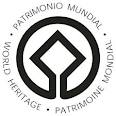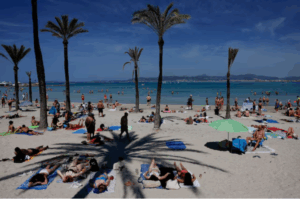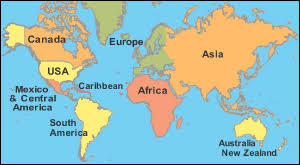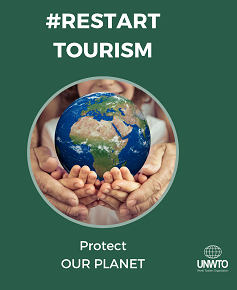26 new sites inscribed on World Heritage List

Paris : The World Heritage Committee closed its 36th session recently after almost two weeks of work under the chair of Eleonora Mitrofanova, the Ambassador of Russia to UNESCO.
The Committee added 26 new sites to UNESCO’s World Heritage List during the session. It marked the 40th anniversary of the Convention Concerning the Protection of the World Cultural and Natural Heritage.
The new properties include five natural, twenty cultural and one mixed – i.e. natural and cultural site. UNESCO’s World Heritage List now numbers a total of 962 properties. The number of countries with sites on the List grew to 157, with the inscription of sites in Chad, Congo, Palau and Palestine.
Two conservation success stories were recognized by the Committee. It removed the Fort and Shalamar Gardens in Lahore (Pakistan) and the Rice Terraces of the Philippine Cordilleras (Philippines) from the List of World Heritage in Danger.
Meanwhile, the World Heritage Committee added five sites to the Danger List because of concern for their conservation: Timbuktu and the Tomb of Askia (Mali), Birthplace of Jesus: Church of the Nativity and the Pilgrimage Route, Bethlehem (Palestine), Fortifications on the Caribbean Side of Panama: Portobelo-San Lorenzo (Panama); and Liverpool – Maritime Mercantile City (UK).
The 21 members of the Committee were particularly concerned for the fate of Timbuktu. During the session, armed groups stepped up their attacks on the World Heritage site and destroyed sacred tombs. The Committee adopted a decision condemning the destruction and outlining measures to be taken for Timbuktu when conservation becomes possible.
The next session of the Committee will take place in Phnom Penh (Cambodia) from 17 to 27 of June 2013 under the chair of Cambodia’s Deputy Prime Minister Sok An.
The World Heritage Committee inscribed Lena Pillars Nature Park of the Russian Federation, the last site to be added to UNESCO’s World Heritage List during this year’s session. Chad, Congo, Palau and Palestine had World Heritage sites inscribed on the List for the first time.
Lena Pillars Nature Park is marked by spectacular rock pillars that reach a height of approximately 100 metres along the banks of the Lena River in the central part of the Sakha Republic (Yakutia). They were produced by the region’s extreme continental climate with an annual temperature range of almost 100 degrees Centigrade (from -60°C in winter to +40°C in summer). The pillars form rocky buttresses isolated from each other by deep and steep gullies developed by frost shattering directed along intervening joints. Penetration of water from the surface has facilitated cryogenic processes (freeze-thaw action), which have widened gullies between pillars leading to their isolation. Fluvial processes are also critical to the pillars. The site also contains a wealth of Cambrian fossil remains of numerous species, some of them unique.
A total of five natural World Heritage Sites were inscribed during the present session of the World Heritage Committee:
Lakes of Ounianga (Chad);
Sangha Trinational (Cameroon, Central African Republic, Congo,);
Chengjiang Fossil Site (China);
Western Ghats (India);
Lena Pillars Nature Park (Russian Federation).
Rock Islands Southern Lagoon (Palau) was inscribed as a mixed natural and cultural site.
A total of 20 cultural sites were inscribed during the session:
Pearling, Testimony of an Island Economy (Bahrain); Major Mining Sites of Wallonia (Belgium);
Rio de Janeiro, Carioca Landscapes between the Mountain and the Sea (Brazil);
The Landscape of Grand-Pré (Canada);
Site of Xanadu (China);
Historic Town Grand-Bassam (Côte d’Ivoire);
Nord-Pas de Calais Mining Basin (France);
Margravial Opera House Bayreuth (Germany);
Cultural Landscape of Bali Province: the Subak System as a Manifestation of the Tri Hita Karana Philosophy (Indonesia);
Masjed-e Jāmé of Isfahan (Islamic Republic of Iran),
Gonbad-e Qābus (Islamic Republic of Iran);
Sites of Human Evolution at Mount Carmel : The Nahal Me’arot/Wadi el-Mughara Caves (Israel);
Archaelogical Heritage of the Lenggong Valley (Malaysia);
Rabat, Modern Capital and Historic City: a Shared Heritage (Morocco);
Birthplace of Jesus: Church of the Nativity and the Pilgrimage Route, Bethlehem (Palestine);
Garrison Border Town of Elvas and its Fortifications (Portugal);
Bassari Country: Bassari, Fula and Bedik Cultural Landscapes (Senegal);
Heritage of Mercury Almadén and Idrija (Slovenia/Spain);
Decorated Farmhouses of Hälsingland (Sweden);
Neolithic Site of Çatalhöyük (Turkey).
Birthplace of Jesus: Church of the Nativity and the Pilgrimage Route, Bethlehem (Palestine) was inscribed on UNESCO’s List of World Heritage in Danger, as it was added to the List of World Heritage. Two of Mali’s World Heritage sites, Timbuktu and the Tomb of Askia, were also added to the List of World Heritage in Danger, as were Liverpool Maritime Mercantile City (UK) and the Fortifications on the Caribbean Side of Panama: Portobelo-San Lorenzo (Panama).
Two conservation success stories were recognized by the World Heritage Committee allowing for them to be removed from the List of World Heritage in Danger: Fort and Shalamar Gardens in Lahore (Pakistan) and the Rice Terraces of the Philippine Cordilleras (Philippines).-UNESCO WHS














